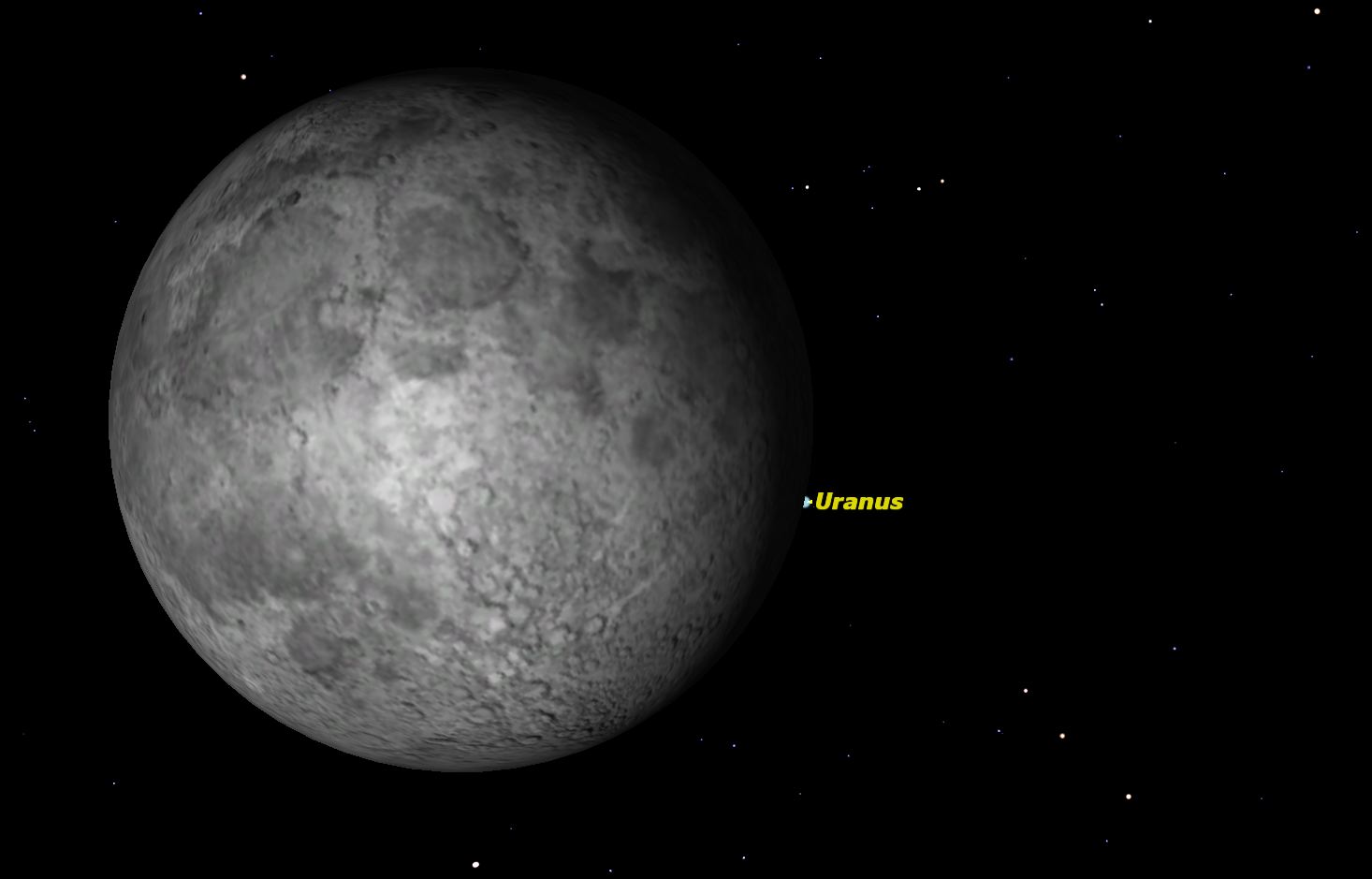 | |||||||||||||||||||||||||||||||||||||||||||||||
| For education orders please call 1-877-290-8256. Welcome to the September Second Week Featured Article! Uranus plays Peek-a-boo with the Moon Geoff Gaherty, Starry Night EducationAs the Moon moves in its orbit around the Earth it inevitably passes in front of many stars and planets. 
On Wednesday night Uranus plays peek-a-boo with the Moon for observers in the Northeast. Credit: Starry Night software. When the Moon passes in front of a star, called a "lunar occultation," the star usually winks out instantaneously, since it is so much farther away. Exceptions happen when the star is a double star or, more rarely, when the star passes behind a mountain on the edge of the Moon. When the Moon passes in front of a planet, the disappearance is more gradual. Even for a planet as distant as Uranus, the disappearance takes about 10 seconds. Such an occultation of Uranus happens this Wednesday evening for skywatchers in northeastern North America. This happens just around moonrise, so the earlier the Moon rises in your location, the better your chances of seeing it. In most locations, Uranus will have passed behind the Moon while the Moon is still below the horizon, so only the reappearance of Uranus will be visible. For example, in Halifax, Nova Scotia, the Moon rises at 9:24 p.m. ADT. Uranus passes behind the Moon at 10:00, when the Moon is only 5 degrees above the horizon, next to impossible to observe. Uranus reappears nearly an hour later at 10:40. In New York City, the Moon rises at 8:10 p.m. EDT but Uranus appears only 21 minutes later, at 8:31, when the Moon is only 3 degrees above the horizon, a tough observation unless you have a really low eastern horizon. You can use a planetarium software program like Starry Night to give you the exact time when Uranus will be uncovered. This will also let you determine ahead of time exactly where on the Moon’s limb the planet will appear from your particular location. Since the whole event takes only 10 seconds, its important to be looking at the right spot. Even if you live too far west to observe the actual occultation, this is an excellent opportunity to use Uranus’ proximity to the Moon to locate and observe Uranus. Again, your planetarium program will show you exactly where Uranus is located relative to the Moon, which will vary from one location to another. Uranus is just at the lower limit of naked-eye visibility, but can be easily seen in binoculars. Even the largest amateur telescopes will show only a tiny featureless blueish disk. |
| ||||||||||||||||||||||||||||||||||||||||||||||
© 2016 Simulation Curriculum Corp. All Rights Reserved. |
|||||||||||||||||||||||||||||||||||||||||||||||
